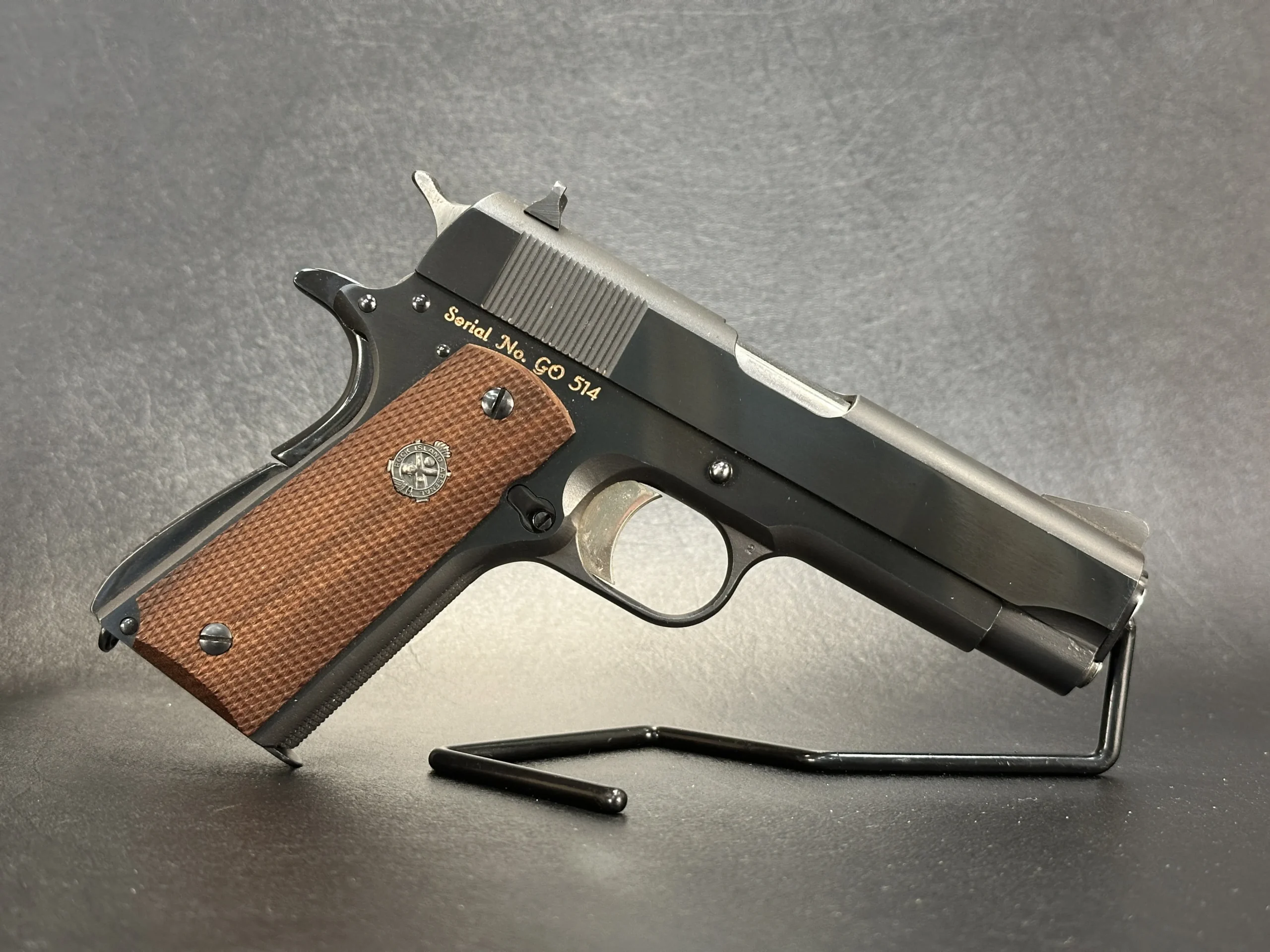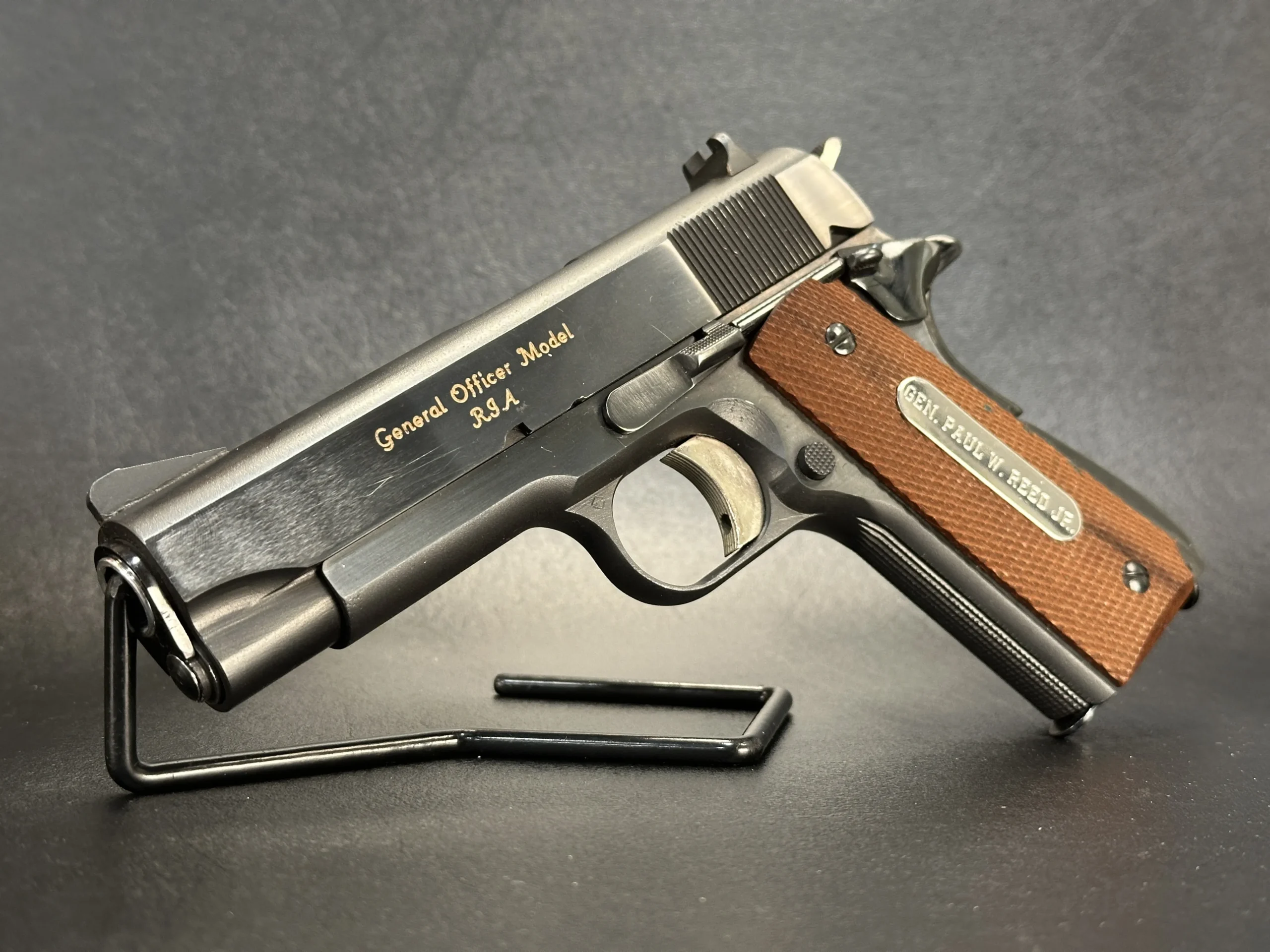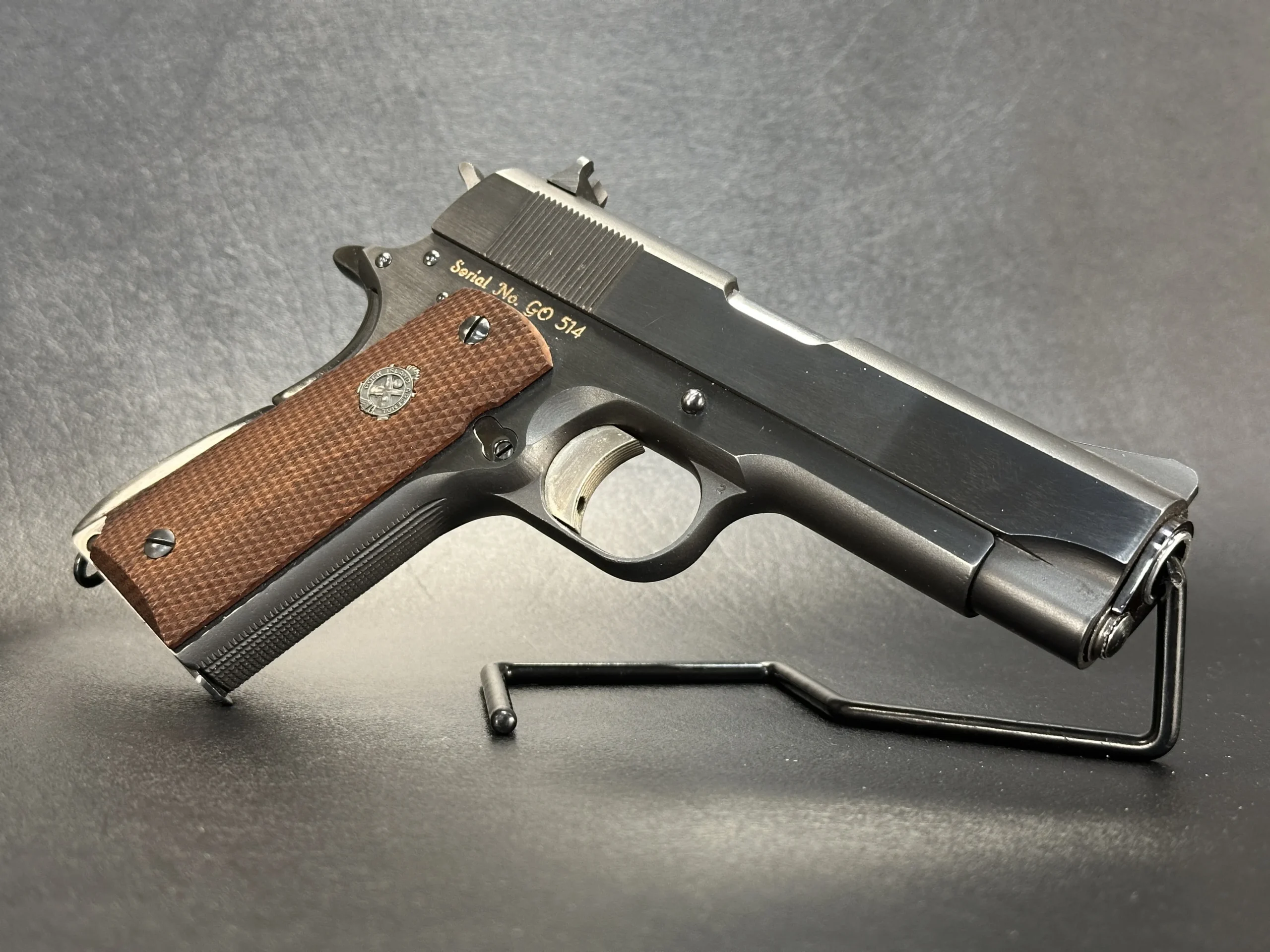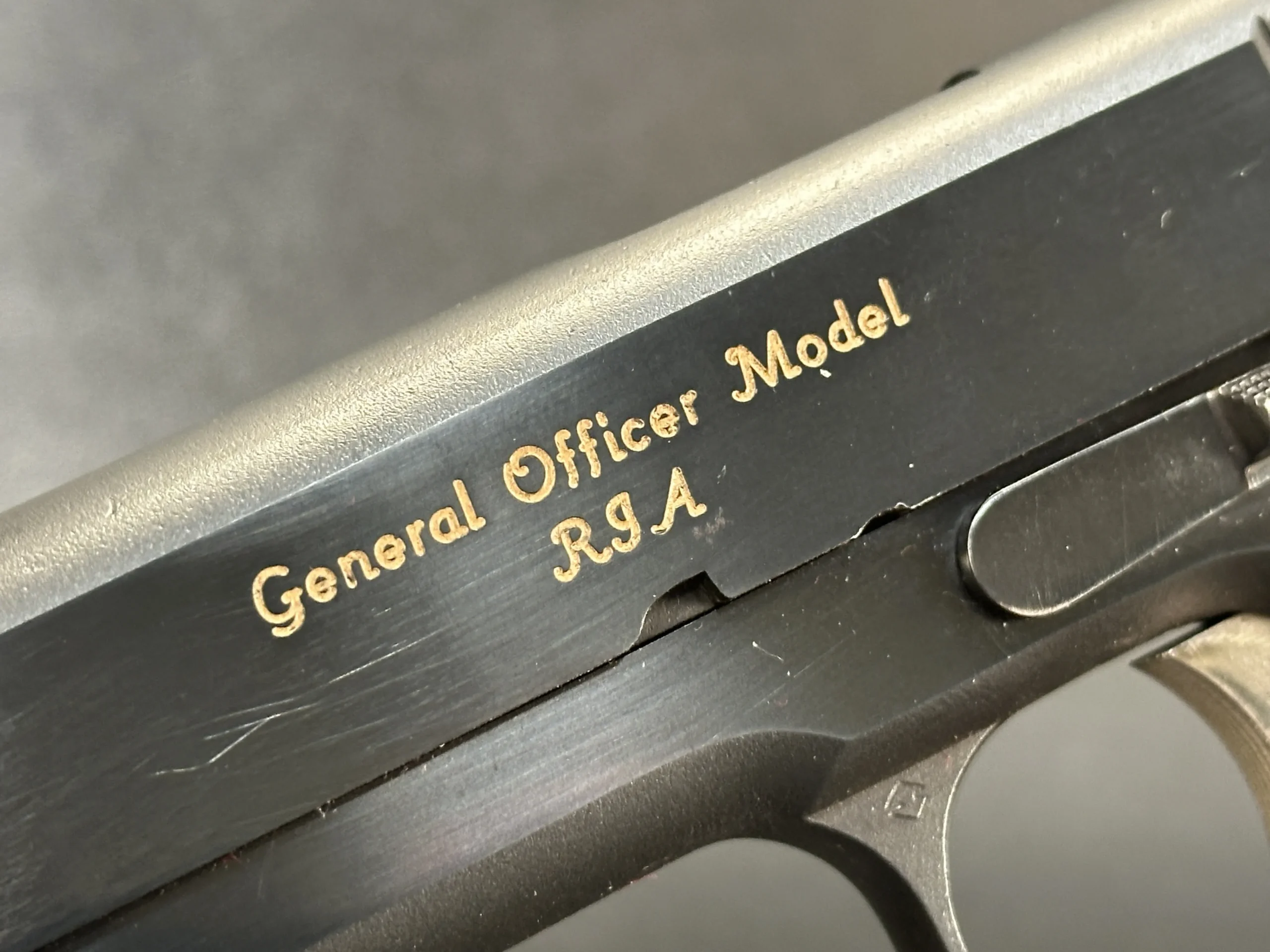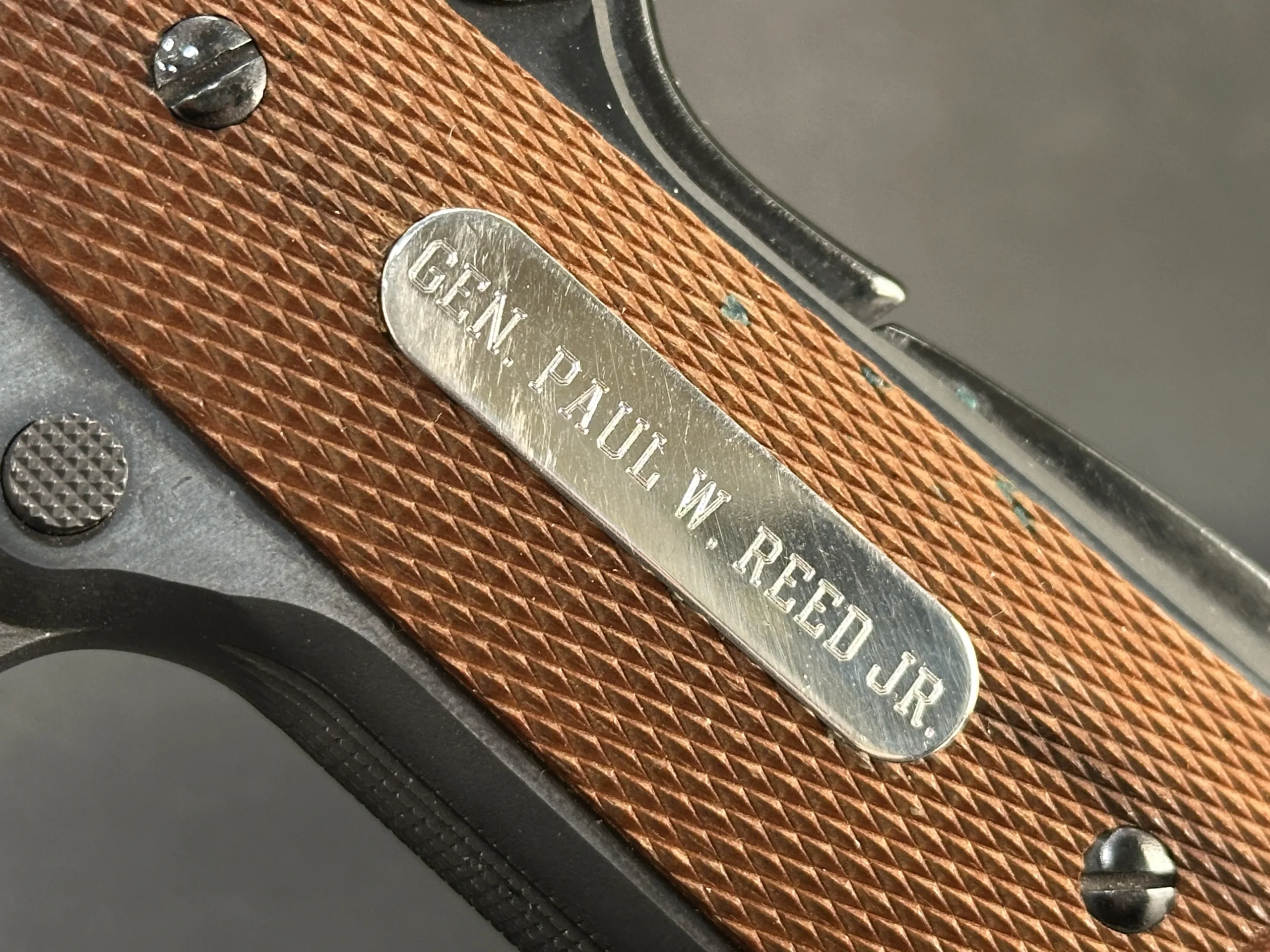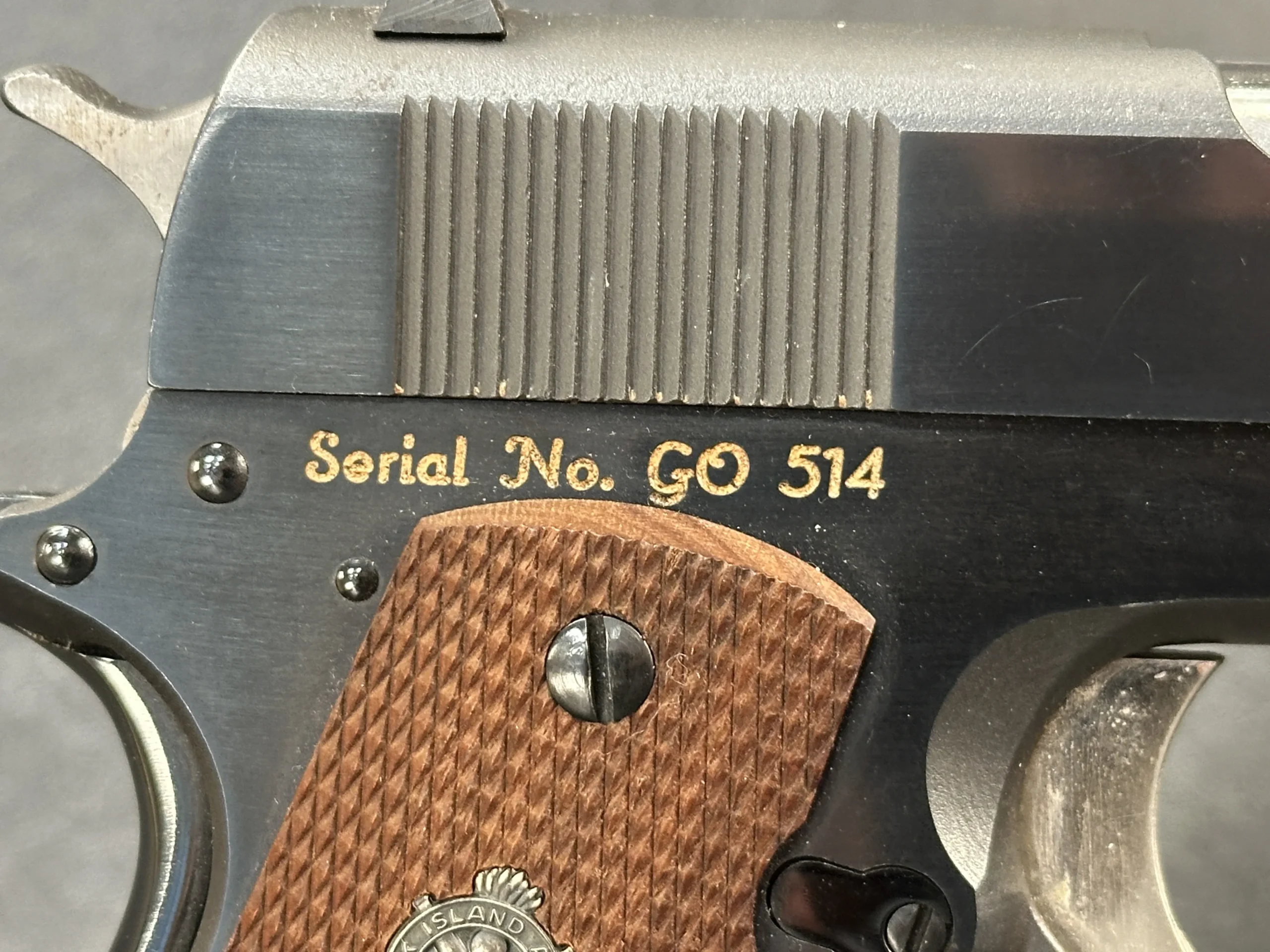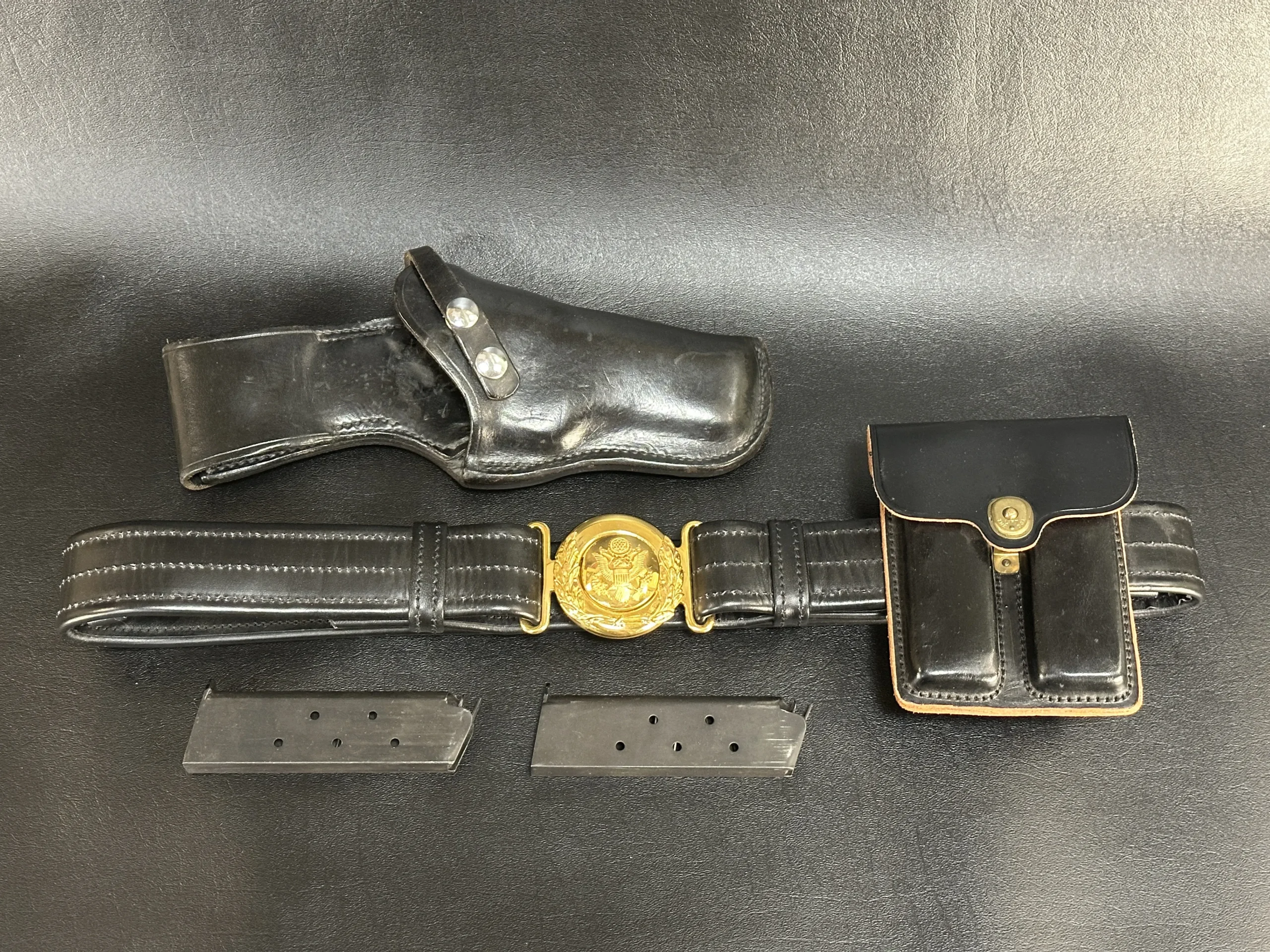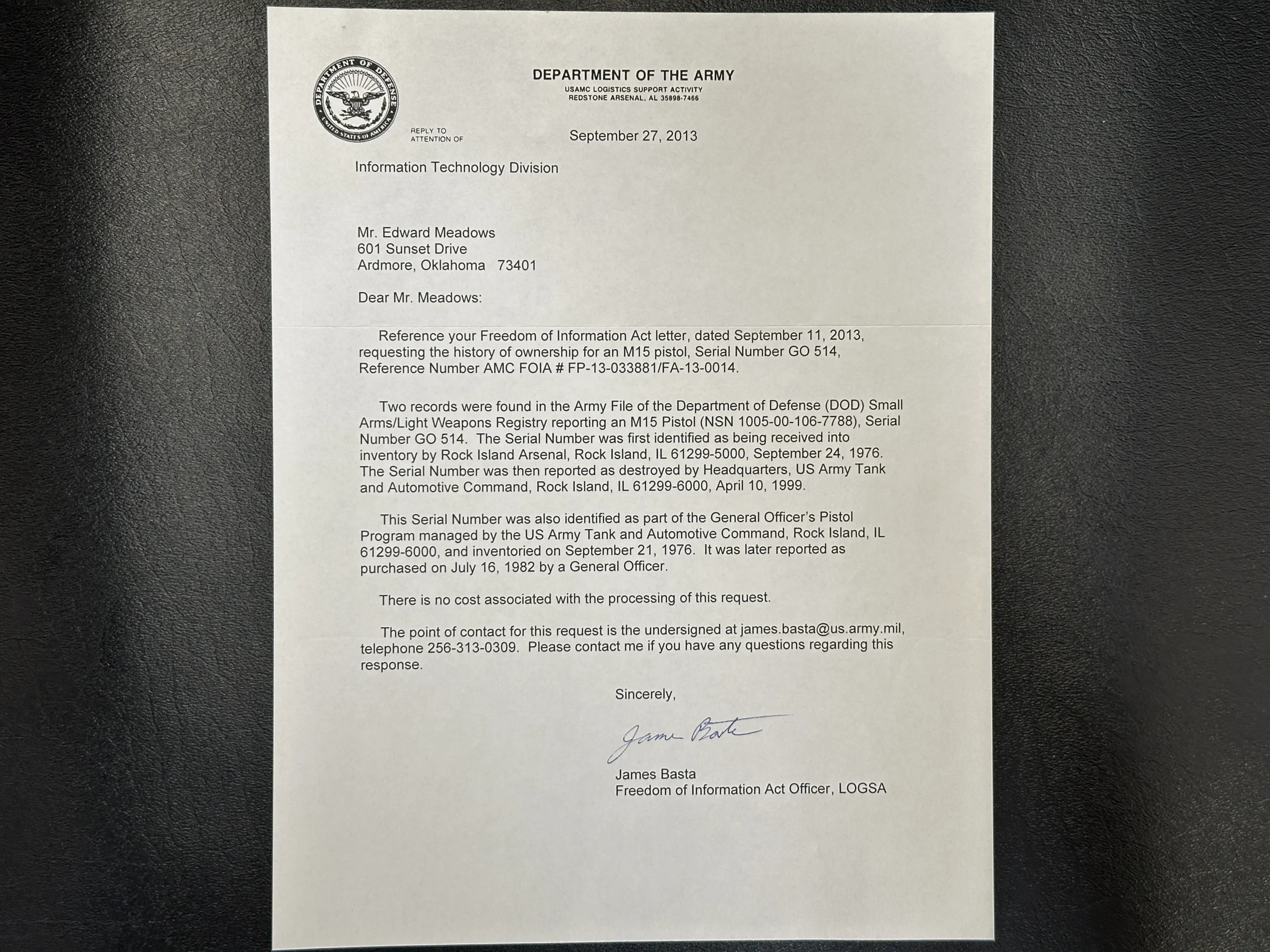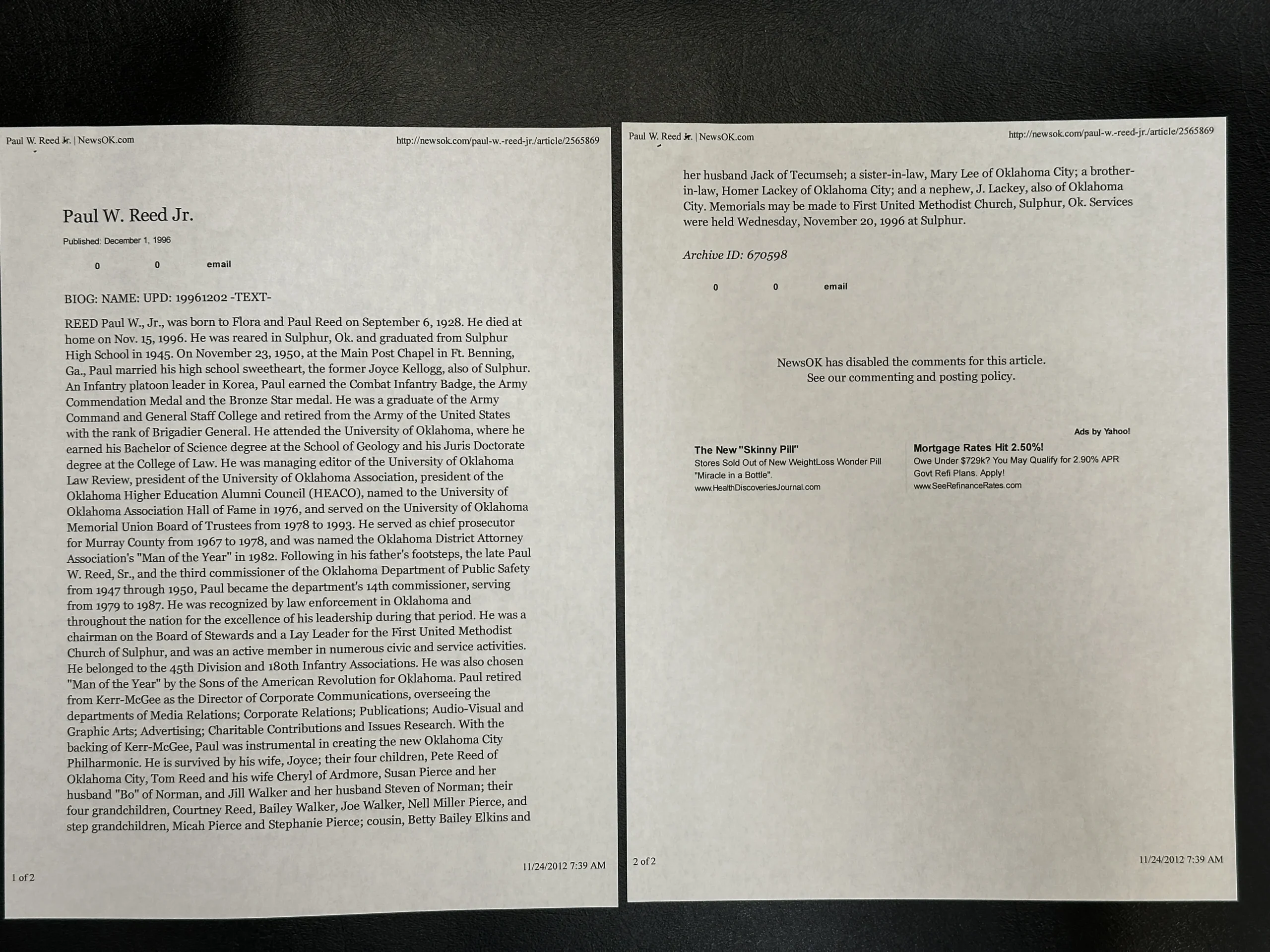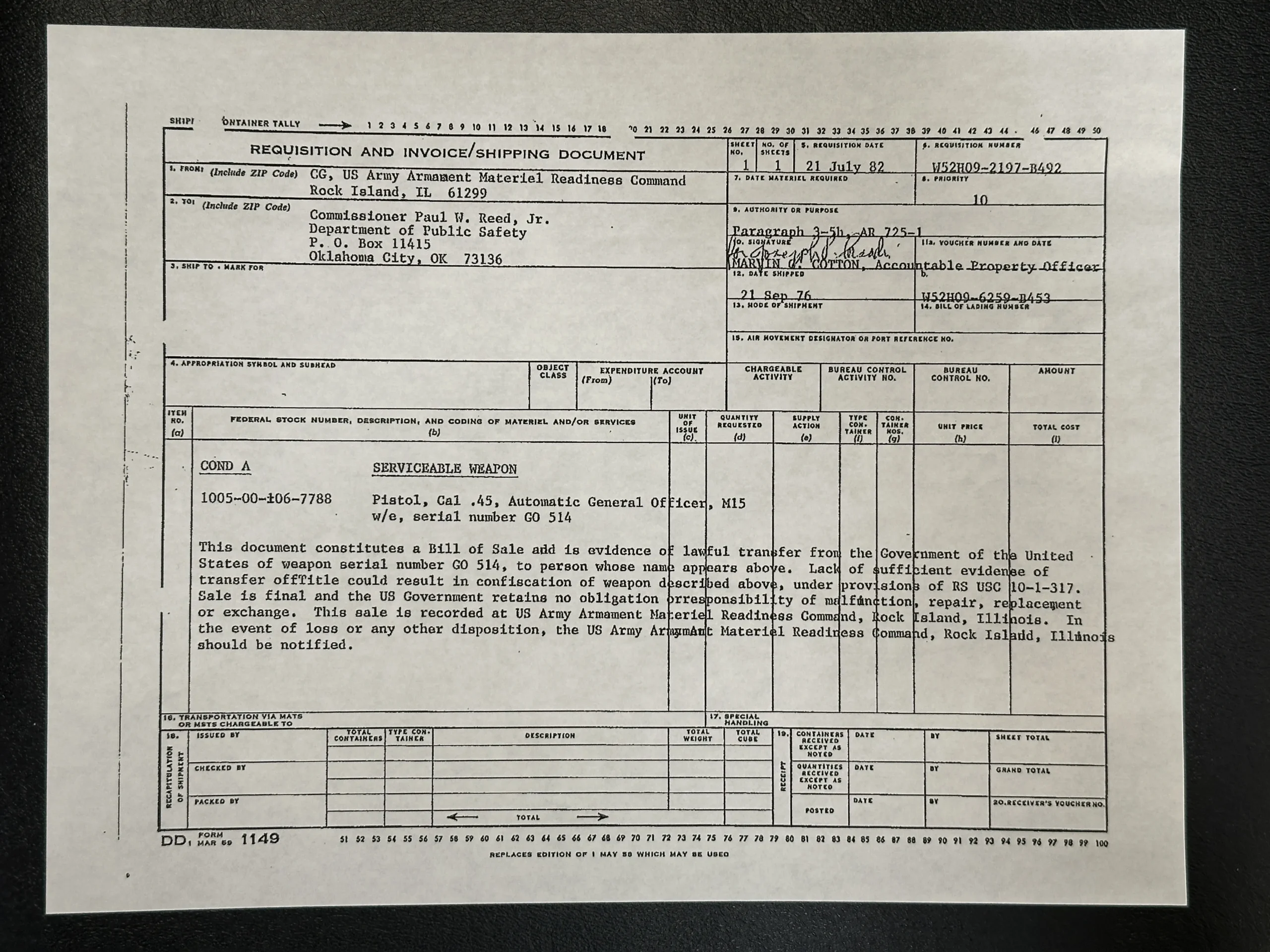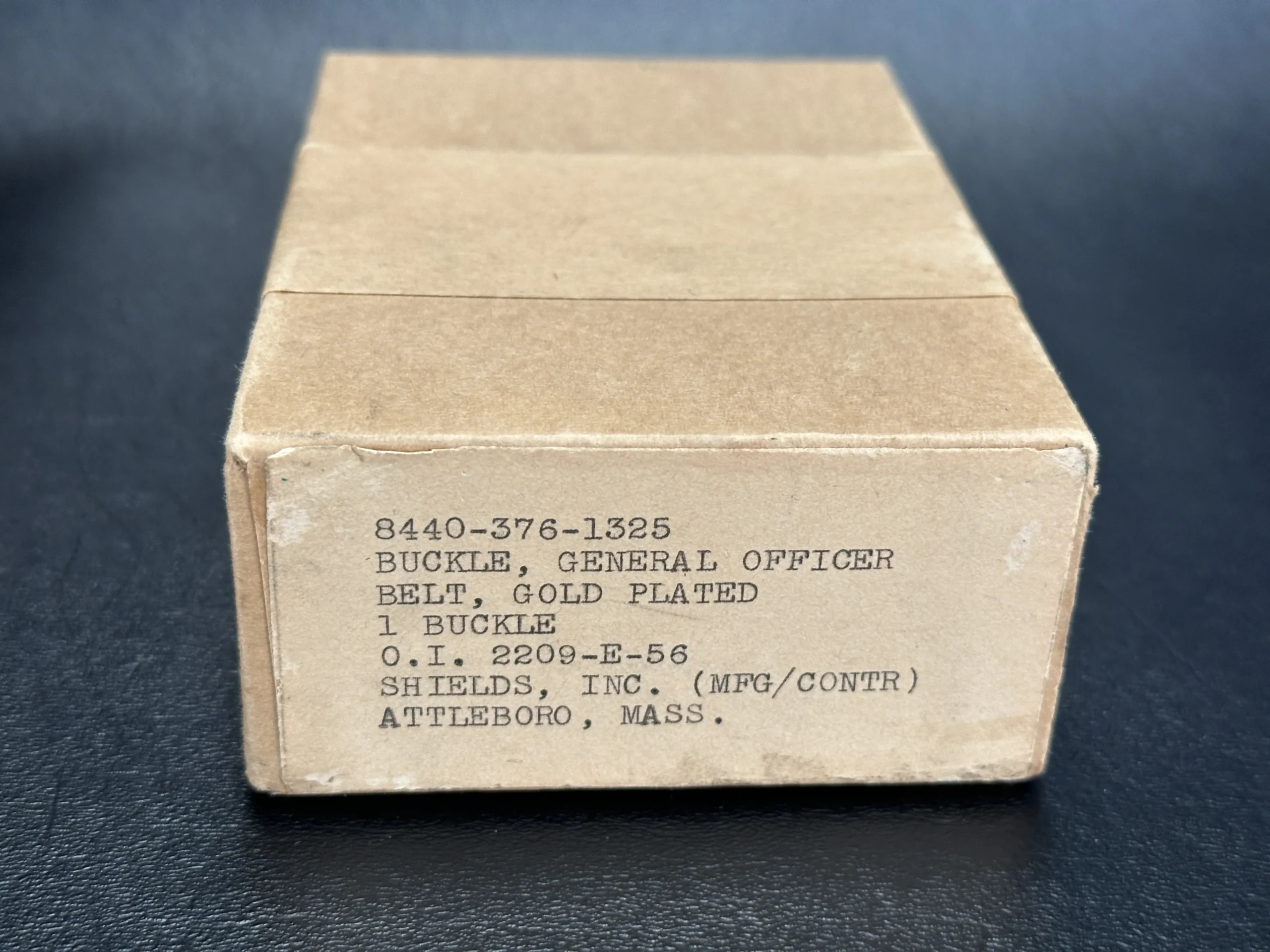Description
Here’s one with real weight behind it—not just in the hand, but in history. This Rock Island Arsenal M15 isn’t just any pistol; it belonged to Brigadier General Paul W. Reed Jr., a decorated Korean War veteran who served with distinction as an Infantry platoon leader. He earned the Combat Infantry Badge, the Army Commendation Medal, and the Bronze Star—hard-won symbols of courage on the battlefield. After graduating from the U.S. Army Command and General Staff College, he retired with the rank of Brigadier General.
And this pistol? It followed him home.
Thanks to a FOIA request dated September 27, 2013, we know that Rock Island Arsenal originally inventoried this very M15 on September 21, 1976. It remained on Army records until July 16, 1982, when a report noted that it was in the possession of a General Officer. Just days later, on July 21, 1982, a Bill of Sale formally documented its transfer to Reed in Oklahoma City, OK.
The M15 itself is a unique chapter in American military arms history. It’s the only sidearm ever designed and manufactured exclusively for issue to U.S. Army General Officers. Think of it as the military’s bespoke pistol—created to replace the aging Colt Model 1903 and 1908 pocket pistols. Only 1,004 were produced starting in 1972, making every example a rarity. This one, based on the Colt Commander frame with a 4.5” barrel, blends a sleek 1911A1 silhouette with select upgrades: a chrome National Match-style trigger and a checkered front strap for added grip and control.
The grips? Two-piece checkered walnut—classic and timeless. The left side features a General Officer’s plaque, while the right bears the emblem of Rock Island Arsenal. This particular pistol comes with three matching 7-round magazines, all paired with an ejector pencil marked “514.”
Included with the pistol is an authentic black leather General Officer’s rig—belt, Bucheimer holster, and double magazine pouch, all set off with gold-plated buckles. It’s the kind of gear you don’t just wear—you carry with pride. There’s also a cleaning rod, a box of extra buckles, and a set of original supporting documents: a copy of the Bill of Sale, a Department of the Army FOIA response, and Brigadier General Reed’s obituary.
Condition-wise, this pistol has been well-maintained over the decades. The metal finish remains near-excellent, with only a couple of light marks near the slide serrations. The wood grips retain their finish, though the left panel shows some verdigris and faint staining from holster contact—a reminder it wasn’t just stored; it was worn. The bore is bright with just a touch of light pitting near the muzzle—nothing that diminishes its historical significance or functional integrity.



